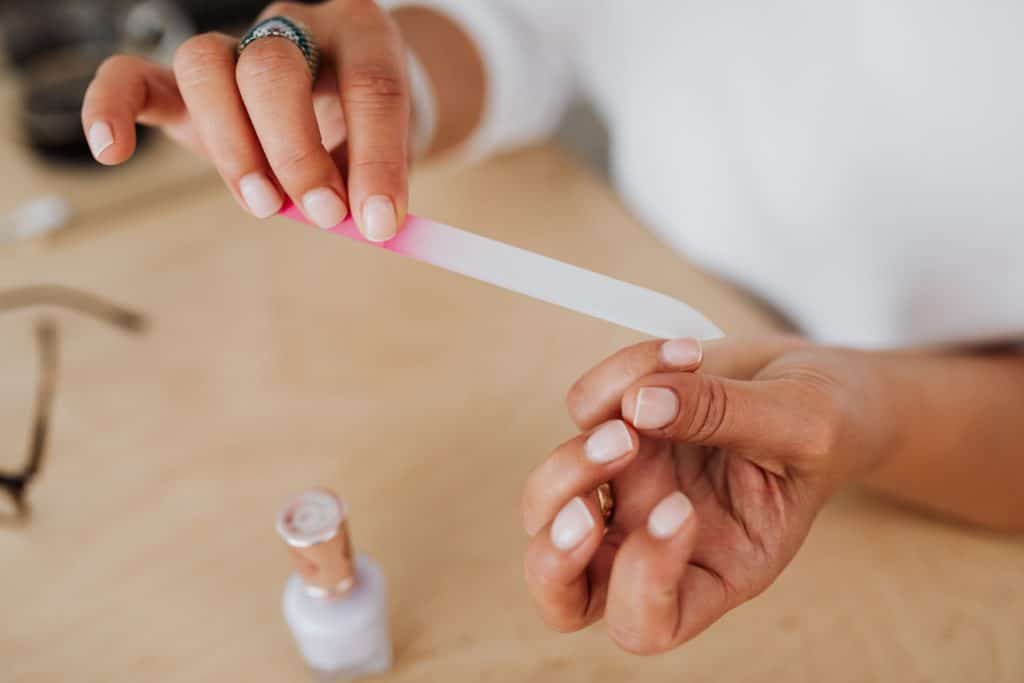Cutting your fingernails might seem like a simple task, but for many parents, especially those with neurodivergent kids, it can turn into quite a challenge. Whether it’s the sensation of the clipper, the sound it makes, or just the idea of trimming nails that causes anxiety, this guide will help you navigate the process smoothly. I’ll walk you through each step, from preparing your child to successfully cutting their fingernails, ensuring the experience is as stress-free as possible for both of you.
Table of Contents
1. Gather Your Supplies
Before you start, it’s crucial to have everything you need within arm’s reach. Trust me, the last thing you want is to leave your wiggly child unsupervised while you search for supplies. Here’s what I recommend having on hand:
- Child-safe nail clippers or scissors
- Emery board or nail file
- Warm water and soap
- Soft towel
- Your child’s favorite toy or book (for distraction)
I’ve found that child-specific nail clippers can make a world of difference. They’re usually smaller, which gives you better control and visibility. If your child is particularly sensitive to the ‘snapping’ sound of clippers, nail scissors might be a quieter alternative.

Read more: Scissor Safety for Kids
2. Create a Relaxing Environment
Setting the right mood can turn nail-cutting from a dreaded chore into a calm, bonding experience. I always advise parents to choose a time when their child is naturally more relaxed – after a bath or during a favorite TV show often works well.
Here are some strategies I’ve seen work wonders:
- Use soft lighting to create a soothing atmosphere
- Play gentle background music
- Ensure the room is comfortably warm (cold fingers tend to curl, making trimming more difficult)
- Have a special ‘nail-cutting’ chair or spot that’s associated with the activity
For children with sensory sensitivities, I often suggest using a weighted lap pad or letting them wear noise-canceling headphones if the sound of cutting bothers them. The goal is to make your child feel safe and comfortable.
3. Prepare the Nails
Proper preparation can make the actual cutting process much smoother. Here’s what I recommend:
- Wash your child’s hands with warm water and soap. This not only cleans the nails but also softens them, making them easier to cut.
- Gently pat the hands dry with a soft towel.
- If possible, let your child soak their fingertips in warm water for a few minutes. This further softens the nails and can be a fun, sensory experience for many kids.
I’ve noticed that this preparation step often helps children transition into nail-cutting mode. It’s like a little spa treatment that signals the start of our grooming routine.
4. Position Your Child Comfortably
Finding the right position is key to a successful nail-cutting session. In my experience, what works best can vary widely depending on the child’s age and individual needs. Here are some options I often suggest to parents:
| Age Group | Suggested Position | Benefits |
|---|---|---|
| Infants | Lying on back or in a parent’s lap | Provides full support and easy access to hands |
| Toddlers | Sitting on a parent’s lap or in a high chair | Offers security and limits movement |
| Older Children | Sitting at a table or on the floor | Allows for independence and better cooperation |
For children with special needs, I often recommend using additional supports. A bean bag chair can provide comforting pressure, while a weighted vest might help a child with ADHD feel more grounded during the process.
5. Cut the Nails Safely
Now comes the main event. Here’s how to cut those nails safely and effectively:
- Hold your child’s hand firmly but gently, supporting the finger you’re working on.
- Use the clippers to cut the nail straight across. Avoid cutting too close to the skin or rounding the edges too much, as this can lead to ingrown nails.
- For children with sensory issues, I often suggest counting or singing a song during each cut. This not only distracts them but also gives them a sense of how long the process will take.
- After cutting, use an emery board to gently smooth any rough edges. Some children find the sensation of filing more tolerable than cutting.
Remember, it’s okay if you don’t get all ten nails in one session. I always tell parents that it’s better to have a positive experience with just a few nails than a negative one trying to do them all.
Tips for Children with Special Needs
In my work with neurodivergent children, I’ve developed some additional strategies that can be helpful:
- Use visual schedules to show the steps of nail cutting
- Offer deep pressure to the hand before and after cutting each nail
- Allow the child to “practice” cutting on a doll or stuffed animal first
- Consider using electric nail files, which some children find less threatening than traditional clippers
Remember, every child is unique. What works for one might not work for another, so don’t be afraid to experiment and find what suits your child best.
6. Make It Fun
Turning nail-cutting into a positive experience can make future sessions much easier. Here are some ideas I’ve seen work well:
- Create a “nail salon” experience with pretend play elements
- Use nail polish as a reward after successful trimming (if age-appropriate)
- Tell stories or make up silly songs about each finger as you cut its nail
- Give your child a special toy or activity that’s only available during nail-cutting time
One of my favorite techniques is to draw a small face on each finger and create little characters. As we trim each “character’s” nail, we give it a funny voice and personality. I’ve seen this transform nail-cutting from a dreaded chore to a eagerly anticipated game for many children.

Read more: Autism Haircut
7. Establish a Regular Routine
Consistency is key when it comes to nail care. I always advise parents to establish a regular schedule for nail-cutting. This not only ensures that nails stay at a manageable length but also helps children know what to expect.
Here’s what I suggest:
- Choose a specific day of the week for nail care
- Incorporate it into an existing routine, like bath time
- Use a sticker chart to track successful nail-cutting sessions
- Gradually increase the number of nails cut in each session as your child becomes more comfortable
By making nail-cutting a predictable part of your child’s routine, you’re likely to encounter less resistance over time. It becomes just another normal part of taking care of our bodies, like brushing teeth or washing hands.

Goally | Best Videos to Teach Life Skills
Give your kid an independent future. Goally has 100+ video classes teaching life skills like “How to Choose a Restaurant,” “How to Interrupt Politely,” and “How to Get Ready for School.”
Goally takes kids on an adventure that includes interactive practice and checkpoints along the way! No web browsers, YouTube, or social media.
Cutting your child’s fingernails doesn’t have to be a battle. With patience, creativity, and the right approach, it can become a positive bonding experience. Remember, every child is different, so don’t be discouraged if it takes some trial and error to find what works best for you and your little one. The key is to stay calm, be consistent, and celebrate the small victories along the way. Before you know it, you’ll be a nail-cutting pro, and your child will have beautifully maintained fingernails to show for it.
Resources:
FAQs about How to Cut Your Fingernails
How often should I cut my child's fingernails?
It's best to cut your child's fingernails once a week to prevent them from becoming too long and causing scratches or breaks. If your child is particularly active, you may need to trim them more frequently.
What’s the best time to cut my child’s fingernails?
The ideal time to cut fingernails is after a bath when the nails are softer and easier to trim. This can also help reduce any discomfort or anxiety your child might have about the process.
How can I prevent my child from being scared of nail cutting?
Start by explaining the process to your child and allowing them to handle the nail clippers to become familiar with them. Use positive reinforcement and distractions, like their favorite toy or a soothing video, to create a calm environment.
What if I accidentally cut my child's skin?
If you accidentally cut your child's skin, clean the area with warm water and apply an antiseptic to prevent infection. Reassure your child, apply a bandage if needed, and try to be extra cautious during future nail trims.
How can I avoid jagged edges after cutting my child's nails?
After trimming the nails, use a nail file to smooth out any rough edges. This step helps prevent your child from scratching themselves and makes the nails look neat and clean.
This post was originally published on 11/02/2023. It was updated on 08/16/2024.

Hennah is an experienced writer and researcher, helping children with autism, ADHD, and other neurodivergent conditions. As a blog contributor for Goally, she combines her deep understanding of neurodiversity with practical advice, offering valuable insights to parents and educators.





